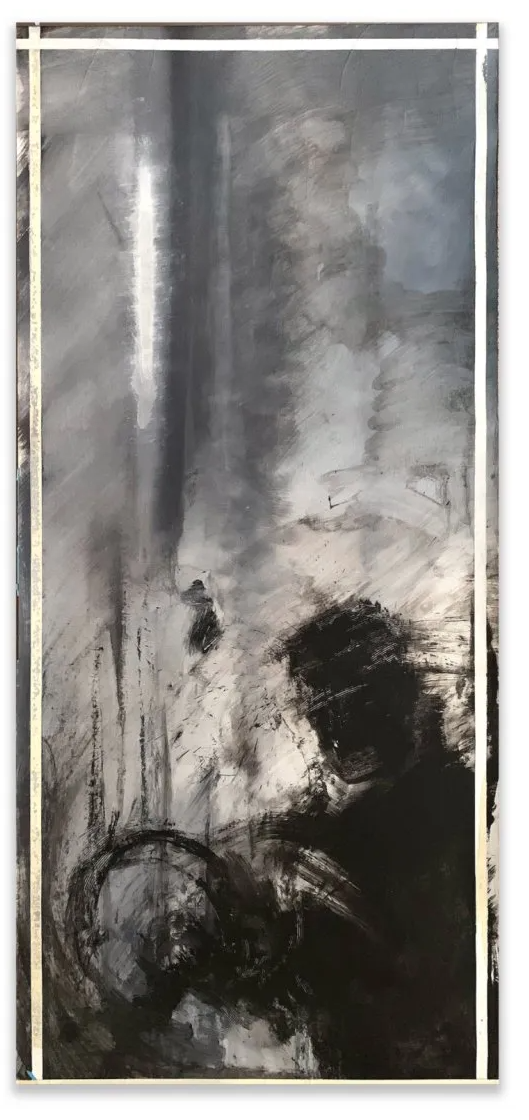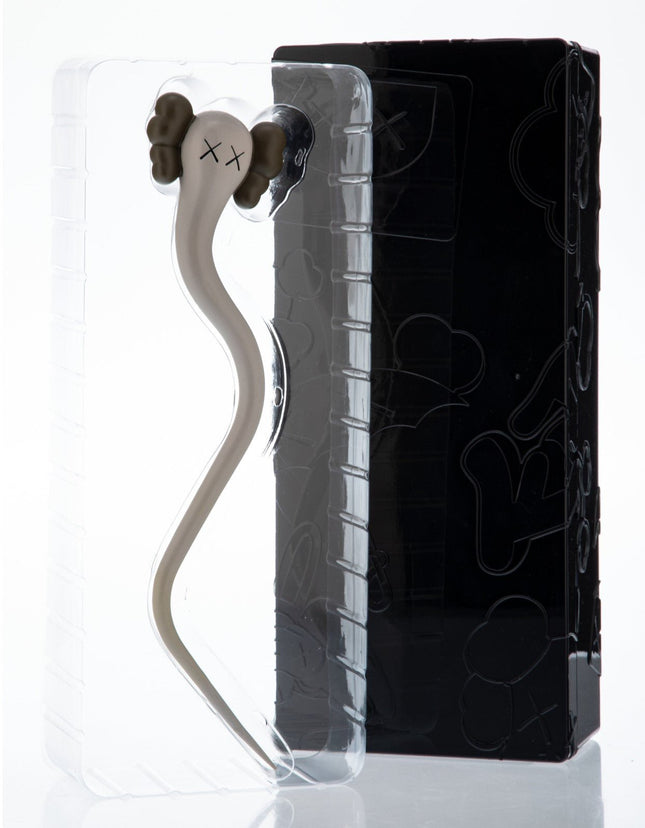
Ghost


Kaws- Brian Donnelly Bendy- Grey Fine Art Toy by Kaws- Brian Donnelly
Bendy- Grey Rare Painted Vinyl Art Toy Sculpture Collectible Artwork by Pop Modern Artist Kaws- Brian Donnelly. 2003 Limited Edition Size 13-3/4 x 3 x 1-1/2 inches Displayed With Box In Fantastic Condition Stamped. KAWS (b. 1974) Bendy (Grey), 2003 Painted cast vinyl 13-3/4 x 3 x 1-1/2 inches (34.9 x 7.6 x 3.8 cm) Stamped to the reverse Produced by Medicom Toy, Tokyo KAWS' Bendy: A Fusion of Street Pop Art and Modern Sculpture KAWS, the artistic moniker of Brian Donnelly, has become a juggernaut in the world of Street Pop Art and Graffiti Artwork, known for his ability to navigate the confluence of commercial and fine art. "Bendy" is a testament to his creative prowess, a piece that exudes the essence of his style while embodying street art's playful yet subversive spirit. Released in 2003, "Bendy (Grey)" is a rare painted vinyl art toy sculpture that illustrates the artist's flirtation with form and space. The sculpture measures an impressive 13-3/4 x 3 x 1-1/2 inches and is presented in a state described as a fantastic condition, signaling the care collectors have taken to preserve this work of art. The grey rendition of "Bendy" is particularly notable for its understated elegance and the way it captures light and shadow, accentuating the fluidity and dynamism of the form. This piece is stamped to the reverse, a signature of authenticity and a hallmark of the collaborative efforts between KAWS and Medicom Toy, Tokyo. Medicom Toys is revered for its dedication to quality and its role in elevating the status of designer toys as a severe form of contemporary art. The Collectibility and Cultural Impact of KAWS' Bendy "Bendy" occupies a unique position in the pantheon of KAWS' creations, representing an early foray into three-dimensional art that would define much of his later work. The collectibility of "Bendy" is derived from its limited-edition status and its place within the narrative of KAWS' evolution as an artist. Collectors and enthusiasts of Street Pop Art admire "Bendy" for its rarity and innovation in the art toy genre, a segment that KAWS has been instrumental in popularizing. KAWS' "Bendy" serves as a cultural artifact that bridges the gap between the insurgent beginnings of graffiti and the polished galleries of modern art. It is a manifestation of the artist's journey, encapsulating the raw energy of street art and the refined finish of contemporary sculpture. Much like the rest of KAWS' work, this piece is not simply a collectible object; it is a narrative in vinyl, a story of progression from the streets to the echelons of high art. Exploring the Artistic Language of KAWS Through Bendy The artistic language of KAWS employs a visual lexicon familiar to many, featuring motifs and figures that echo characters from pop culture. Yet, through works like "Bendy," KAWS subverts these standard forms, infusing them with a distinct sense of emotion and humanity. The grey color of this particular edition of "Bendy" echoes the urban landscape, a nod to the concrete canvases of street artists. It's a color that also conveys a sense of the industrial, mass-produced, and ubiquitous themes often explored in Street Pop Art and Graffiti Artwork. In the art toy "Bendy," there is a playful defiance, a bending of the rules that govern traditional sculpture. This piece showcases KAWS' inclination to push boundaries, to stretch and contort the familiar into something new and unexpected. This willingness to experiment, to blend the irreverent with the sophisticated, has endeared KAWS to both the street art community and the fine art world. "Bendy" is not just an object of desire for collectors; it is a pivotal chapter in the ongoing story of street pop art, a testament to the transformative power of KAWS's artistic vision.
$2,094.00



